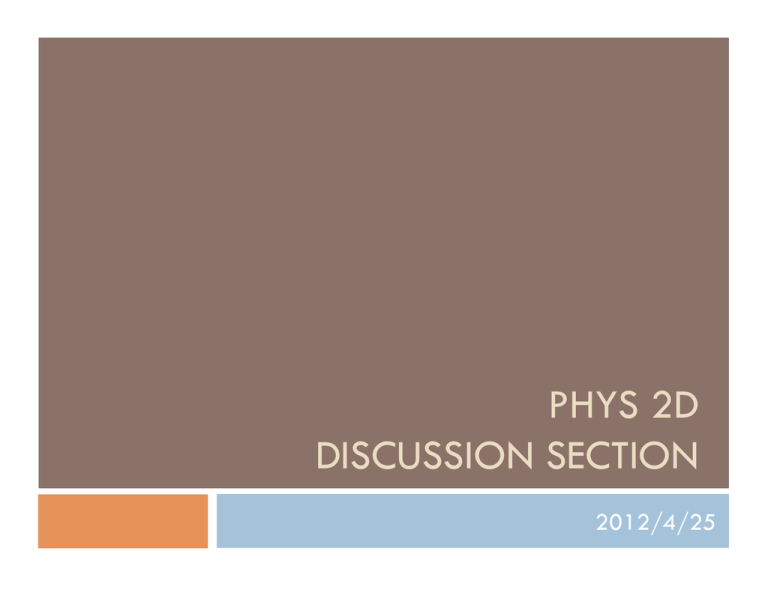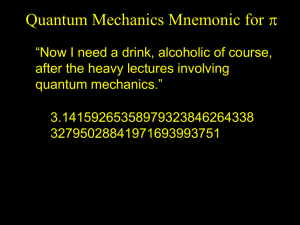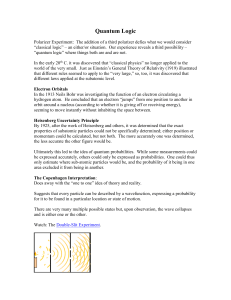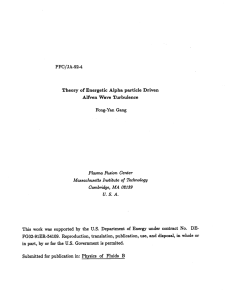PHYS 2D DISCUSSION SECTION 2012/4/25
advertisement

PHYS 2D DISCUSSION SECTION 2012/4/25 Quiz on Friday, Ch. 2 & 3 Contact me for problems about quiz grades Topics for Today Experiments that can’t be explained by classical mechanics & led to quantum mechanics Blackbody Radiation Photoelectric effect Compton Scattering Wave particle duality for light & matter Photoelectric Effect Shining light on metal, electrons emitted by metal What happens when the intensity of light increases? Classical prediction: Light is an EM wave Higher intensity=Larger amplitude e-'s absorb light wave and gains enough energy to leave metal Larger amplitude of light=Larger E force=Larger amplitude of e- oscillation=Larger e- energy With a large enough amplitude, e- will be emitted no matter the frequency Photoelectric Effect Experiment shows that’s not the case e ‘s are observed with light above certain frequency, no matter the intensity Quantum explanation: Energy of light is quantized (photon) Only 1 photon’s worth of energy is absorbed by e e must overcome energy barrier φ to leave metal When photon energy hf > work function φ, e is emitted Compton Scattering Shining X-ray on electron (in graphite) Compton Scattering Classical prediction: Energy of scattered light should depend on incident light intensity/duration (the amplitude argument again), not on scattering angle Experiment: Wavelength (energy) of scattered X-ray depends on angle and incident X-ray frequency Quantum explanation: If we treat incident X-ray as particles with relativistic energy/momentum E=hf=pc, then do an elastic collision with electron, we can explain experimental results perfectly Compton Scattering To calculate relation between angle & wavelength: 5 equations: Energy conservation Momentum conservation (1 for x & 1 for y) E=pc=hf=hc/λ for light (photon) 2 2 2 2 E =(pc) +(mc ) for electron Resulting in experimental results which matches Wave & Particle Nature of Light Photoelectric effect & Compton scattering: Light should be treated as a particle with energy E=hf & momentum E=pc Interference pattern of light: Light propagates like waves Is light a wave or a particle? It is neither Wave & Particle Nature of Light Light behaves like particles in some situations, like waves in others There is no exact classical analogy It’s not a beam of tiny spheres moving through space, but it’s also unlike waves when interacting with atoms (say) Wave & Particle Nature of Matter Light is not particle nor wave, what about matter? Turns out that matter is neither wave nor particle as well Wavelike properties of matter are usually observed at the atomic level Quantum mechanics is about understanding the true nature of matter Questions?











